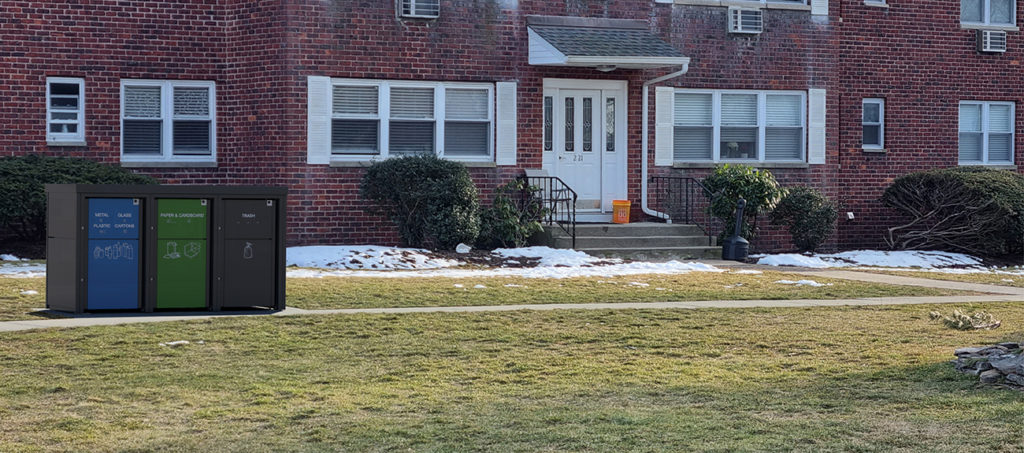Multifamily/Condominiums

User-friendly waste and recycling hubs from metroSTOR promote consistent waste diversion strategies for communal neighborhoods, with the style and customization opportunities for homeowners’ associations and management companies, while helping address equity issues with low-income housing within mixed developments.
Multifamily Capacity
It’s estimated that approximately 30-40% of multifamily units currently have access to recycling, and as more cities make this mandatory, the first questions that arise are often around how much recycling capacity to allow. Reducing trash capacity gradually helps nudge residents towards recycling, and over time you should be able to divert 30-50% of the total capacity from trash to recycling so having the ability to switch streams as behaviours change is important. metroSTOR B-Series Waste & Recycling Housings accommodate most wheeled dumpster and cart sizes. Dumpsters will generally be more cost-effective and space-efficient than multiple roll-out carts.
Multifamily Convenience
This is critical factor for success, right from having reusable recycling bags to aid segregation in smaller kitchens through to accessible communal deposit points for trash and regular recyclables. The best results are obtained when these are located within 40yds of each apartment on a regular route and in a well-lit area. Anonymity and lack of accountability can be an issue with communal facilities and a disproportional number of residents are likely to be elderly of have some form of disability so it’s essential that each stream is readily identifiable, and the facility designed so that the carts can be accessed easily without having to unlock and open doors, touch lids or lift trash bags over an excessively high cill. Facilities should be located within easy reach of a refuse vehicle for easy emptying.
Multifamily Communication
Recycling streams are most clearly identifiable when recognizable color-coding and symbols are used to define acceptable materials. Alongside fitting restricted apertures to reduce contamination, we recommend avoiding text-only signage due to communication challenges within multi-lingual communities. Messaging should be mounted at eye-level if possible, extending around the container so that it’s always visible as users’ approach. Information on the closest receptor points for non-accepted items along with penalties for non-compliance will help reduce illegal dumping.
Multifamily Consistency
Making communal recycling hubs visually attractive, instantly recognizable and inviting to users, enables the facilities to be located more prominently. This helps drive better participation through ease of access, helping to remove anonymity and reinforcing positive social norms. Consistent color-coding, symbols and messaging used across all city communications will minimize confusion with users and consequent contamination and module sizes are available to accommodate commonly used carts and dumpsters, avoiding additional expenditure on infrastructure wherever possible.
Multifamily Cleanliness
Securing carts and dumpsters within an enclosure system will ensure that a safe, clean environment can be maintained at all times, preventing wind-blown litter and reducing illegal dumping. This brings the added benefits of reducing user-contact, ensuring that residents can use the facility without getting their hands dirty. Enclosures are easier to keep clean with minimal labor inputs, which is especially important for carts containing food scraps or yard waste.
Find out more about metroSTOR product systems for multifamily recycling infrastructure and connect with our team for a metroSTOR Zero-Waste Pathway consultation